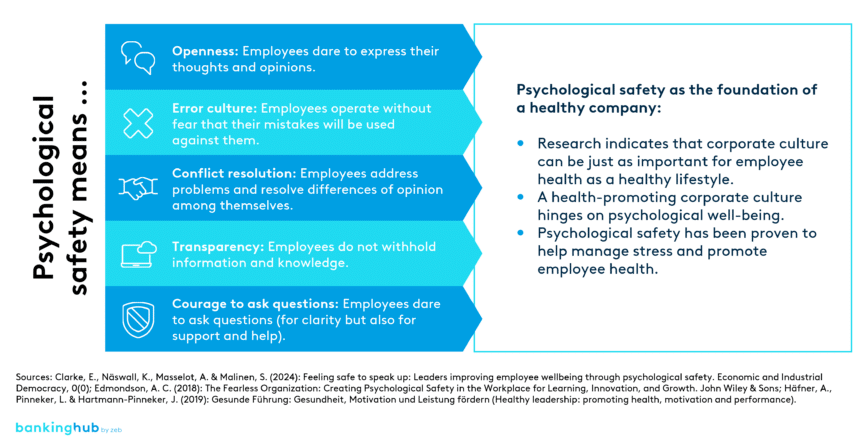|
Getting your Trinity Audio player ready...
|
The effects of poor employee health are clearly noticeable
On average, employees take nearly a month of sick leave, and the trend is pointing upwards.[2] In particular, mental illnesses, such as stress reactions or adjustment disorders, contribute to the growing number of absentee days.[3] New structural conditions in the work environment, such as flexibilization and digitalization, as well as societal megatrends, such as the ever-increasing shortage of skilled workers, are exacerbating the problem. Consequently, work intensification and mounting workloads elevate employees’ stress levels.[4]
Beyond adversely affecting the sick employees themselves, unplanned absences have tangible economic implications.
Based on a full-time position and an average salary, the daily cost of continued remuneration during sick leave by itself amounts to EUR 316 – the annual average exceeding EUR 6,000 per employee.[5] Companies also incur indirect costs such as additional personnel costs (e.g. overtime pay or replacement staff), as well as production losses, administrative overhead, opportunity costs, contractual penalties and costs related to potential employee reintegration. It is no wonder that estimates of up to EUR 750 per day of absence can be found.
Aside from the direct impact that costs associated with absent employees have on a company’s bottom line, poor employee health damages the company’s success in a much more subtle way: elevated stress levels can also set off a detrimental chain reaction among the remaining workforce. For one thing, absorbing the workload of absent colleagues ties up significant personnel resources. For another, only physically and mentally healthy employees can perform at their best and thus actively contribute to the company’s success and growth. The increasing number of sick days in turn can breed dissatisfaction and exacerbate absenteeism as remaining employees shoulder heavier workloads.
Mounting evidence underscores the strong connection between (mental) health and performance.[6] Healthy employees not only contribute to significantly higher productivity, but also exhibit greater motivation, dedication and quality of work, ultimately increasing business efficiency and thus the company’s success.
Against this backdrop, providing a healthy work environment is constantly gaining in importance. Whether you are a manager leading your own team or a company overseeing its workforce, maintaining a healthy team and ensuring the well-being of employees is crucial for long-term success. This is a key point to bear in mind.
BankingHub-Newsletter
Analyses, articles and interviews about trends & innovation in banking delivered right to your inbox every 2-3 weeks
"(Required)" indicates required fields
A decisive influencing factor: psychological safety
The options for strengthening employee health are diverse and range from implementing traditional health promotion programs to more flexible working time models and even to topics relating to leadership development. Cultural aspects of the company, such as leadership style, work atmosphere, social support among colleagues or level of autonomy, can be just as important to employee’s well-being as maintaining a healthy lifestyle.[7] A remarkable finding, isn’t it?
In view of the large number of possible measures and generally tight budgets, companies grapple with a fundamental question: where should they begin in order to achieve the best possible result with minimum effort? The answer is simple: by promoting psychological safety. After all, the existence of psychological safety not only fosters a health-oriented corporate culture but also underpins organizational high performance.[8]
Psychological safety, also referred to as an “anxiety-free organization”, pertains to how members of an organization collaborate and interact. It encompasses employees’ ability to freely express themselves, propose ideas, share knowledge, ask questions and admit to mistakes without having to fear negative repercussions or rejection from colleagues or superiors.[9] Yet it was only through Google’s “Aristotle” research project, in which the tech giant spent two years exploring the secret of effectiveness and efficiency within its own ranks, that the concept became really prominent in the wider working context. The study, which examined 180 teams, yielded remarkable insights: while factors like meaningfulness of work and clarity of expectations do contribute to team success, psychological safety emerged as the single most critical determinant.[10]
Psychological safety, serving as the bedrock for performance, innovation and growth, not only establishes the critical foundation for all levels of corporate success but also directly contributes to managing stress and promoting employee health.[11]
Being able to manage psychological safety is a key competitive advantage
The good news is: psychological safety can be actively cultivated – companies can systematically boost it by taking measures in two central fields of action:
I) Placing people center stage
People draw their motivation from various sources – either from their intrinsic drive, a well-functioning team or an inspiring manager who develops and encourages their employees. The degree of psychological safety interacts with these motivators. For one thing, this means that employees tend to be more motivated when they work in an environment where they perceive psychological safety. For another, actions taken by individuals, teams, and managers in turn directly impact psychological safety.
It is therefore crucial to give the issue strategic relevance in order to raise awareness of the need for psychological safety, while at the same time providing information on the level of its maturity within the organization. Only when there is transparency about employees’ perception of psychological safety and their true motivators will it be possible to derive targeted measures to improve psychological safety at all levels.
II) Analyzing the influence of existing processes, instruments and structures and optimizing them where necessary
The second field of action focuses on structural aspects. By aligning all relevant HR tools to consistently promote the desired behaviors, the company can foster trust-building interactions over the long term. Common goals, coupled with effective management methods, reinforce psychological safety.
So what are you waiting for? Start your journey toward an anxiety-free organization today and strengthen not only your employees’ health but also your company’s long-term success!








